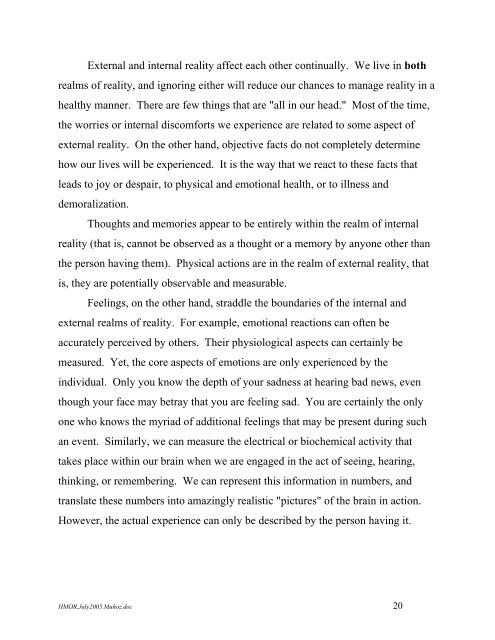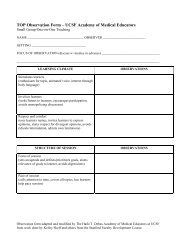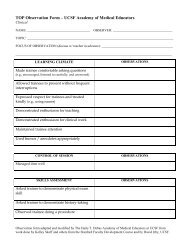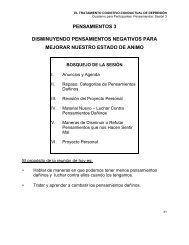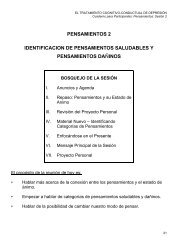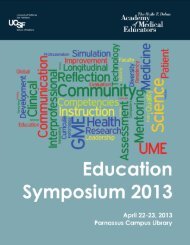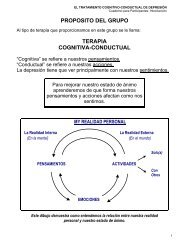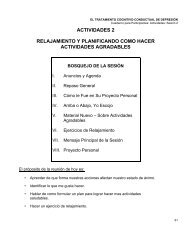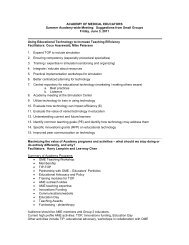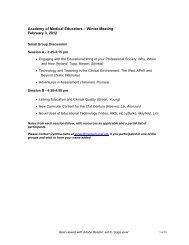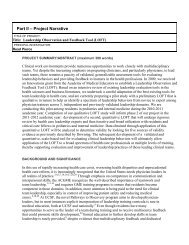The Healthy Management of Reality - Stanford University
The Healthy Management of Reality - Stanford University
The Healthy Management of Reality - Stanford University
Create successful ePaper yourself
Turn your PDF publications into a flip-book with our unique Google optimized e-Paper software.
External and internal reality affect each other continually. We live in bothrealms <strong>of</strong> reality, and ignoring either will reduce our chances to manage reality in ahealthy manner. <strong>The</strong>re are few things that are "all in our head." Most <strong>of</strong> the time,the worries or internal discomforts we experience are related to some aspect <strong>of</strong>external reality. On the other hand, objective facts do not completely determinehow our lives will be experienced. It is the way that we react to these facts thatleads to joy or despair, to physical and emotional health, or to illness anddemoralization.Thoughts and memories appear to be entirely within the realm <strong>of</strong> internalreality (that is, cannot be observed as a thought or a memory by anyone other thanthe person having them). Physical actions are in the realm <strong>of</strong> external reality, thatis, they are potentially observable and measurable.Feelings, on the other hand, straddle the boundaries <strong>of</strong> the internal andexternal realms <strong>of</strong> reality. For example, emotional reactions can <strong>of</strong>ten beaccurately perceived by others. <strong>The</strong>ir physiological aspects can certainly bemeasured. Yet, the core aspects <strong>of</strong> emotions are only experienced by theindividual. Only you know the depth <strong>of</strong> your sadness at hearing bad news, eventhough your face may betray that you are feeling sad. You are certainly the onlyone who knows the myriad <strong>of</strong> additional feelings that may be present during suchan event. Similarly, we can measure the electrical or biochemical activity thattakes place within our brain when we are engaged in the act <strong>of</strong> seeing, hearing,thinking, or remembering. We can represent this information in numbers, andtranslate these numbers into amazingly realistic "pictures" <strong>of</strong> the brain in action.However, the actual experience can only be described by the person having it.HMOR.July2005.Muñoz.doc 20


